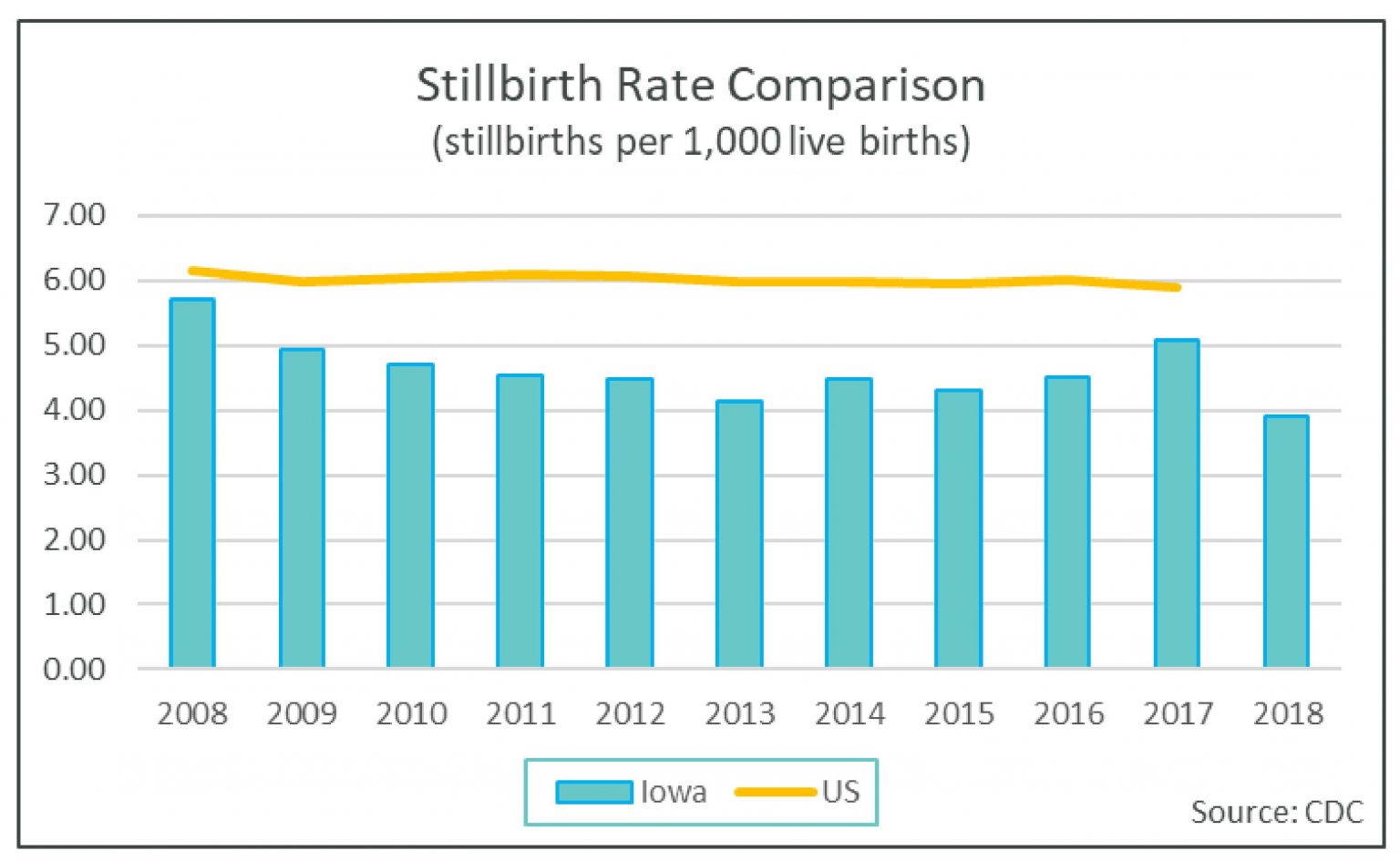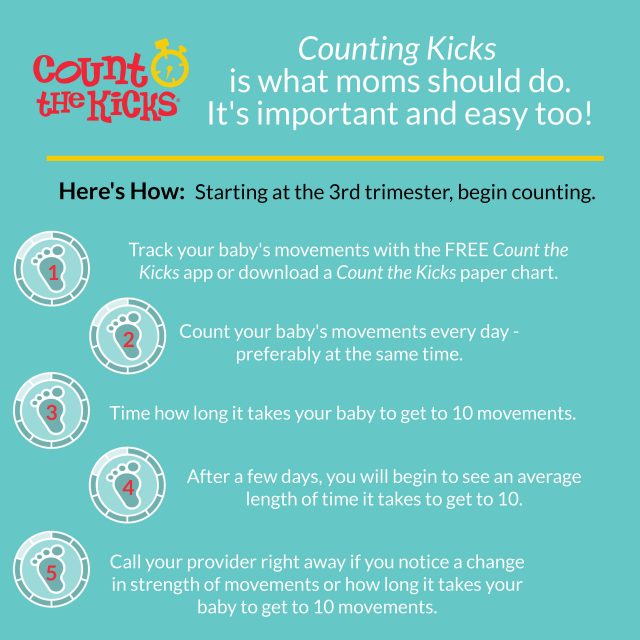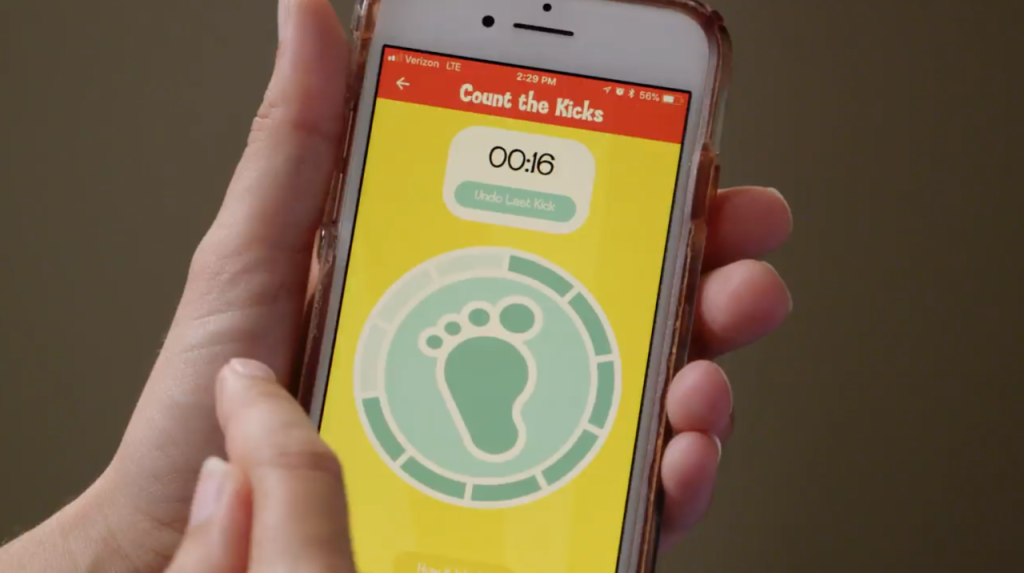This is a guest post from Grace Greene, Count the Kicks Mississippi Ambassador, who also shared her experience in episode 512 of The Birth Hour.
My son is what Count the Kicks calls a “baby save.” He was born safely after I paid attention to his movement, noticed when something was off, and spoke up to my provider. His birth, and what I have learned about fetal movement since then, have propelled me to become an ambassador for Count the Kicks in my home state of Mississippi. The information about why it’s important to use kick counting to monitor your baby’s well-being is too important not to spread widely to expectant parents!
What is Counting Kicks?
Count the Kicks is an evidence-based stillbirth prevention program that was started in Iowa in the early 2000s by five mothers who each walked through the heartache of losing a daughter to stillbirth or infant death. Bound together by their collective grief, they started Count the Kicks when they learned about public health research that showed a 30 percent reduction in stillbirth by teaching pregnant women how to monitor fetal movement during the third trimester of pregnancy. These mothers agreed that their work would be worth the effort if even one baby could be saved, but they have greatly surpassed that mark with their simple and effective campaign. Since Count the Kicks began in Iowa in 2008, their state stillbirth rate has been reduced by nearly 32% while the national stillbirth rate has remained relatively stagnant.

Stillbirth and stillbirth prevention are not often talked about, even though a family is 10 times more likely to lose a baby to stillbirth than to SIDS. According to the CDC, 23,500 babies are born still in the U.S. every year. This is one in every 167 pregnancies. Racial disparities exist as well, with stillbirth occurring in one in every 94 pregnancies for Black moms, one in every 191 pregnancies for Hispanic moms, and one in every 204 pregnancies for white moms. Count the Kicks is committed to removing these racial disparities in stillbirth by working to make sure their important information about kick counting reaches all moms across the country.
How to Count Baby’s Kicks?
So how does the program work? At 28 weeks (26 weeks if high-risk), all moms should download the FREE Count the Kicks app (it’s available in 12 languages on Apple and Android) or use their printable paper chart and start counting their baby’s kicks daily. Pick a time of day when the baby is normally active and time how long it takes to get to 10 movements. After a week or so, you will see a pattern of how long it takes your baby to get to 10 movements. By knowing what is normal for YOUR baby, you can quickly notice when something is off and contact your care provider to check in on your baby. I remember thinking often in previous pregnancies that I wish I could know if all was well with my baby. Thanks to the Count the Kicks campaign, moms can easily check in on their baby and will be able to quickly notice if something is off.
All expectant parents should count their baby’s kicks beginning in the third trimester. In addition to being easy, low cost, non-invasive, and a great way to bond with your baby, many moms report feeling less anxious, as they are reassured when they monitor their baby. Most importantly, it can save babies. Count the Kicks has more than 60 baby save stories on their website from moms who wrote in to share how Count the Kicks helped save their baby.
Misconceptions about Fetal Movement in Pregnancy
Some common misconceptions about fetal movement show why it’s important to track movement daily. The first misconception is that babies move less as they get closer to their due date. This is false! Babies might move differently, and moms might feel less sharp kicking and more rolling, but they will not move less as the pregnancy progresses. If you are monitoring movement at the same time each day, it should take about the same time to get to 10 movements. Babies will continue to move up to and during labor and birth and won’t run out of room the bigger they get.

The second misconception is that it’s not really necessary to count movements if a baby is always active. The truth is that even active babies can experience distress, sometimes quickly and without other warning signs. Tracking fetal movement daily will remove any guesswork from wondering if your normally active baby has slowed down.
The third misconception is that if you can hear a baby’s heartbeat on a home doppler, you don’t need to worry about tracking movement. This is false because a change in the baby’s heart rate is one of the last things to occur when a baby is in distress, whereas decreased movement is an early warning sign and can alert you to a problem much sooner.
The last misconception (and information that you will find if you google fetal movement) is that a mom should feel at least 10 kicks in two hours. This common misconception is based on outdated information about fetal movement. The latest research shows that a mom should be focusing on fetal movement in general and understanding their baby’s pattern, which you will understand by using the Count the Kicks app regularly. Every baby is different, and once you know what is normal for your baby, that is the metric you should follow for determining if something is off.
Counting Baby’s Kicks & COVID-19
During this time of COVID-19 when we are all united and working towards not unnecessarily burdening our health care system, Count the Kicks is a solution to take some of the pressure off. Through the early warning system of counting kicks, there is a community of moms who are in tune with their bodies and their babies and can let providers know when something feels off. Some parents are worried about going to the hospital or contacting their care provider during COVID-19, however all expectant parents should know that it is important to speak up and check on your baby if you feel something is off. Even in a pandemic, don’t don’t delay if you are concerned about your baby.
Count the Kicks has the incredible goal of saving 7,500 babies a year in the U.S. If the rest of the country could experience a 32% decrease in stillbirths as Iowa has done in the first 10 years of the campaign, this goal would be reached. The truth about stillbirth is that there can be warning signs if moms know what to look for. When armed with this information, moms can feel confident to identify when a baby is moving normally and will be empowered to speak up for their baby if something is off. I am eternally grateful that I knew to call my provider when I noticed a decrease in fetal movement and that my concerns were taken seriously. My son truly was in distress and by acting quickly on his behalf, he was born safe and healthy.

Learn More about Counting Baby’s Kicks & Download Count the Kicks App
Want to learn more? Count the Kicks has an academy for expectant parents on their website that is full of additional information about fetal movement, including videos with more information from providers and moms who have used Count the Kicks during a pregnancy. For providers they have a continuing education course, a provider academy with the latest research on stillbirth and fetal movement, information on how to implement the program in your practice, and the ability to order materials for patients.
I would encourage you to first download the app and start counting if you are pregnant, then follow Count the Kicks on all social media channels to learn more about their campaign, tell your expectant friends to download the app and start counting, and let your provider know about this important program if they have not yet implemented it in their practice.
Knowledge is power, and I hope you feel reassured and confident about your ability to monitor your baby’s movement during pregnancy and speak up if something is off.
This was a guest post from Grace Greene, Count the Kicks Mississippi Ambassador, who also shared her experience in episode 512 of The Birth Hour.

No Comments yet!